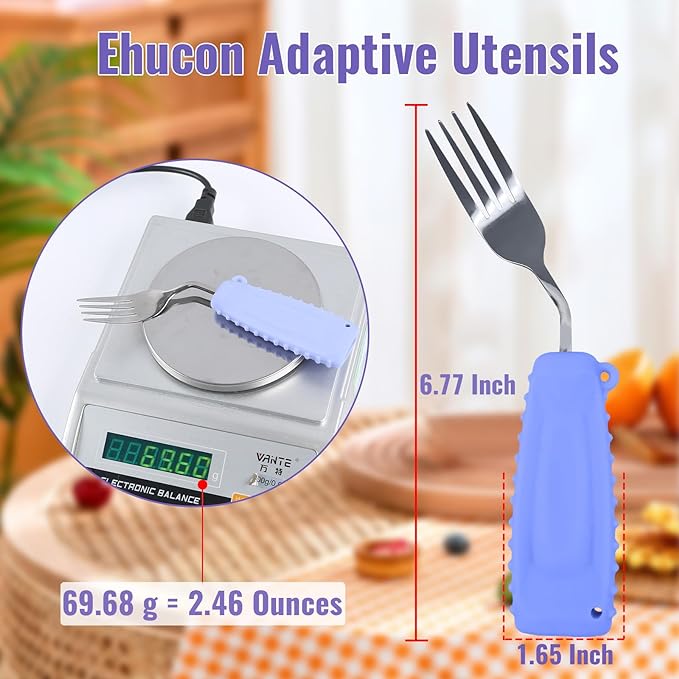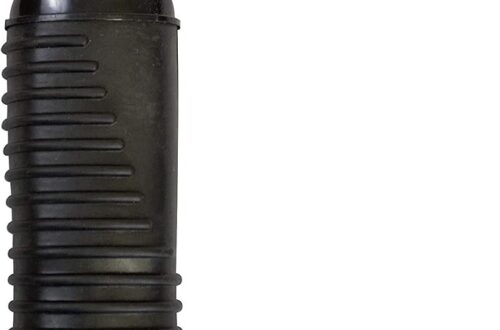Caring for a stroke patient involves numerous responsibilities, including ensuring they can eat comfortably and independently. Curved utensils are adaptive tools designed to help stroke patients with limited hand mobility and coordination. This guide will help caregivers select the best curved utensils to enhance their loved one’s dining experience.
Understanding Curved Utensils
Curved utensils, also known as angled or bent utensils, are eating tools with a slight curve in the handle. This design allows for a more natural and comfortable grip, reducing the need for twisting and turning the wrist. These utensils are ideal for stroke patients who struggle with standard flatware.
Benefits of Curved Utensils for Stroke Patients
- Improved Comfort: The ergonomic design reduces wrist and hand strain, making eating more comfortable for stroke patients.
- Increased Independence: These utensils enable stroke patients to eat without assistance, promoting independence and confidence.
- Versatility: Curved utensils come in various forms, such as spoons, forks, and knives, catering to different types of meals.
- Durability: Often made from high-quality materials, these utensils are built to last and withstand regular use.
Why Curved Utensils are Ideal for Stroke Patients
- Ease of Use: The curved handle allows for easier scooping and bringing food to the mouth, requiring less effort and coordination.
- Supportive Design: The design helps stabilize the utensil, reducing spills and making the dining experience smoother.
- Adaptability: Curved utensils can be adjusted to suit the specific needs of each patient, making them a versatile choice.
Choosing the Right Curved Utensils for Stroke Patients
When selecting curved utensils for stroke patients, consider the following factors:
- Material: Opt for durable materials like stainless steel or plastic that are easy to clean and maintain.
- Handle Design: Look for ergonomic handles that provide a comfortable and secure grip.
- Specific Needs: Choose utensils that cater to the patient’s specific needs, such as spoons for soups and cereals, forks for solid foods, and knives for cutting.
Tips for Caregivers on Using Curved Utensils
To maximize the benefits of curved utensils, here are some tips for caregivers:
- Practice Regularly: Encourage patients to practice using their new utensils to become accustomed to the feel and motion.
- Use Non-Slip Plates: Pairing curved utensils with non-slip plates and bowls can further enhance the dining experience by preventing spills.
- Consult with Therapists: For personalized recommendations, consult with occupational therapists who can suggest the best utensils based on individual needs.
Making Mealtime Enjoyable
Creating a pleasant dining environment can significantly impact a stroke patient’s eating experience. Here are some additional tips:
- Set Up the Table: Arrange the table with all necessary items within easy reach to minimize effort.
- Be Patient and Supportive: Encourage the patient and offer assistance when needed, but allow them to eat at their own pace.
- Monitor Progress: Keep track of any improvements or challenges with using the utensils, and adjust as necessary.
Conclusion: Enhance Dining for Stroke Patients with Curved Utensils
Curved utensils offer a practical and supportive solution for stroke patients, enhancing their dining experience by improving comfort and independence. Investing in these adaptive tools can make a significant difference in the quality of life for stroke patients. As a caregiver, choosing the right utensils and creating a supportive dining environment can greatly enhance your loved one’s mealtime experience.
Embrace the convenience and empowerment that curved utensils provide, and enhance the dining experience for stroke patients today.





